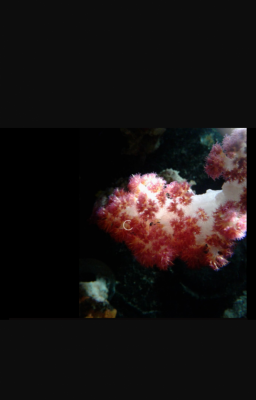revhtree
Owner Administrator
View Badges
Staff member
Super Moderator
Reef Squad
Partner Member 2024
Excellence Award
RGB
Photo of the Month
Article Contributor
R2R TV Featured
Hospitality Award
Article Administrator
Black Friday Sponsor
Partner Sponsor 2023
Industry Professional
My Aquarium Showcase
- Joined
- May 8, 2006
- Messages
- 47,841
- Reaction score
- 87,766
NITRATE REDUCTION: How are you keeping Nitrates down?
Nitrate is an ion that has long dogged aquarists. It is typically formed in aquaria through the digestion of foods, and in many aquaria it builds up and can be difficult to keep at natural levels. In the past, many aquarists performed water changes with nitrate reduction as one of the primary goals. Fortunately, we now have a wide array of ways to keep nitrate in check, and modern aquaria suffer far less from elevated nitrate than they have in the past. In some case, aquarists have even found that they have reduced it too far, and nitrate dosing can even be beneficial.
Elevated nitrate is often associated with algae, and indeed the growth of algae is often spurred by excess nutrients, including nitrate. The same can be said for other potential pests in aquaria, such as dinoflagellates. Nitrate itself is not acutely toxic at the levels usually attained in aquaria, at least as it is so far known in the scientific literature, but elevated levels do seem detrimental to the health of fish. Additionally, elevated nitrate can spur the growth of zooxanthellae in corals, which can darken corals and may decrease the growth rate of a host coral.
For these reasons, most reef aquarists strive to keep nitrate levels down. Some are very successful, and others are not. This article provides some background on nitrate in the ocean and in aquaria, and describes a number of techniques that aquarists have successfully used to keep nitrate levels down to more natural levels in reef aquaria. - @Randy Holmes-Farley
This question of the day comes to you as a request by one of our members! Today let's talk about how YOU are keeping your nitrates down. Let's discuss and talk nitrate reduction methods!
1. What methods do you employ to keep nitrate levels in check?
2. Do you have a problem keeping your nitrate level at an acceptable range?
3. What is an acceptable range for you and nitrates in your reef aquarium?

Nitrate is an ion that has long dogged aquarists. It is typically formed in aquaria through the digestion of foods, and in many aquaria it builds up and can be difficult to keep at natural levels. In the past, many aquarists performed water changes with nitrate reduction as one of the primary goals. Fortunately, we now have a wide array of ways to keep nitrate in check, and modern aquaria suffer far less from elevated nitrate than they have in the past. In some case, aquarists have even found that they have reduced it too far, and nitrate dosing can even be beneficial.
Elevated nitrate is often associated with algae, and indeed the growth of algae is often spurred by excess nutrients, including nitrate. The same can be said for other potential pests in aquaria, such as dinoflagellates. Nitrate itself is not acutely toxic at the levels usually attained in aquaria, at least as it is so far known in the scientific literature, but elevated levels do seem detrimental to the health of fish. Additionally, elevated nitrate can spur the growth of zooxanthellae in corals, which can darken corals and may decrease the growth rate of a host coral.
For these reasons, most reef aquarists strive to keep nitrate levels down. Some are very successful, and others are not. This article provides some background on nitrate in the ocean and in aquaria, and describes a number of techniques that aquarists have successfully used to keep nitrate levels down to more natural levels in reef aquaria. - @Randy Holmes-Farley
This question of the day comes to you as a request by one of our members! Today let's talk about how YOU are keeping your nitrates down. Let's discuss and talk nitrate reduction methods!
1. What methods do you employ to keep nitrate levels in check?
2. Do you have a problem keeping your nitrate level at an acceptable range?
3. What is an acceptable range for you and nitrates in your reef aquarium?


















